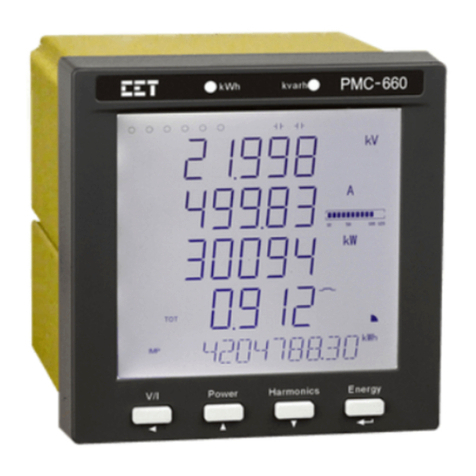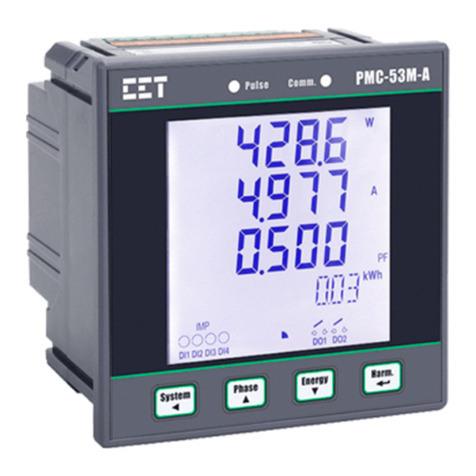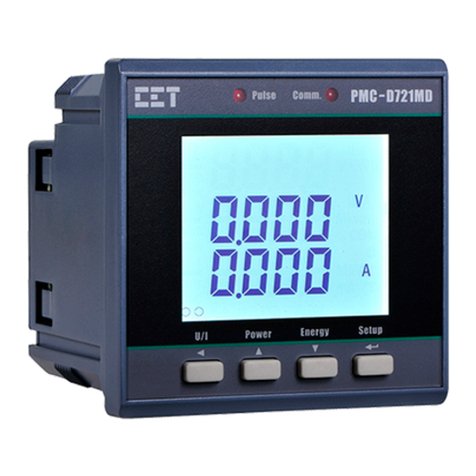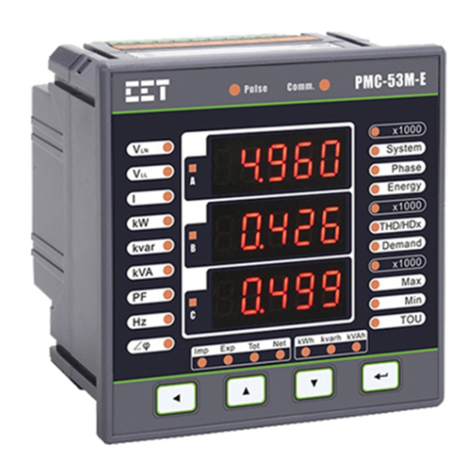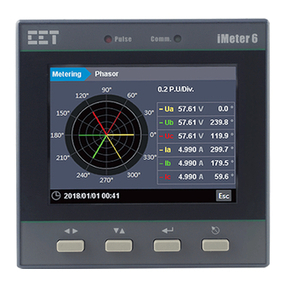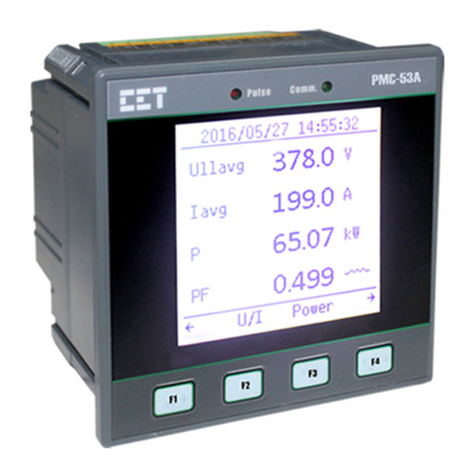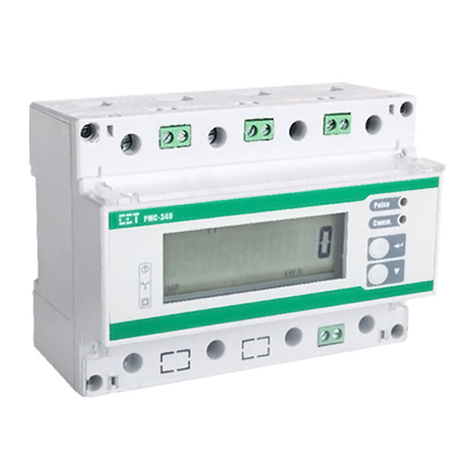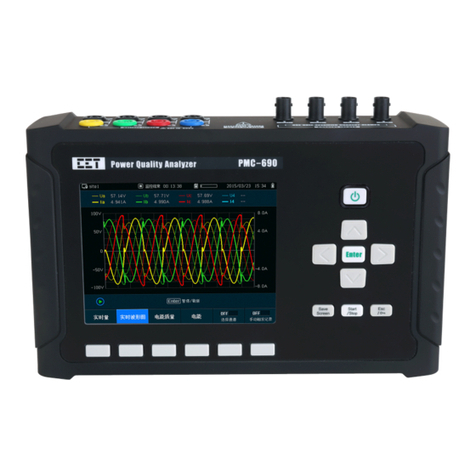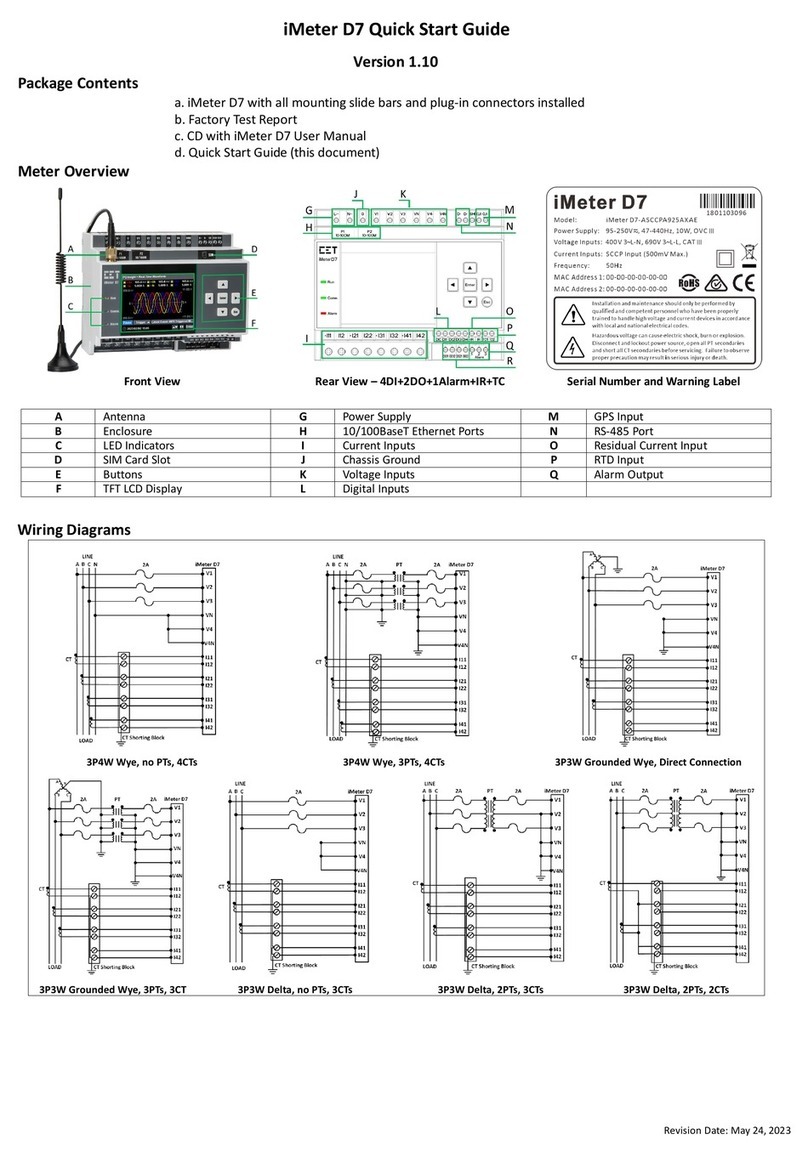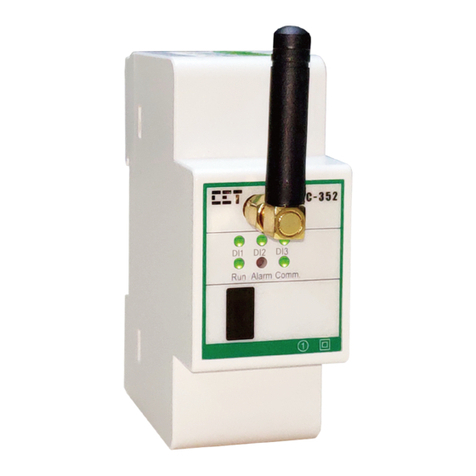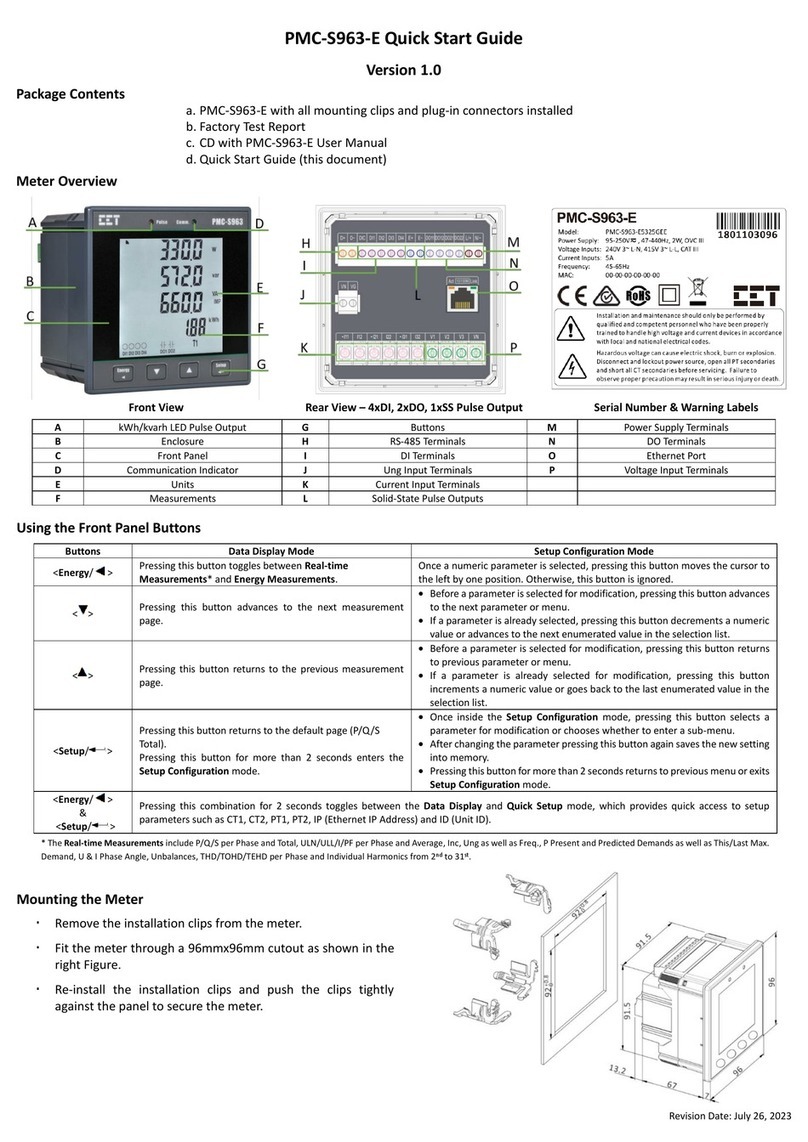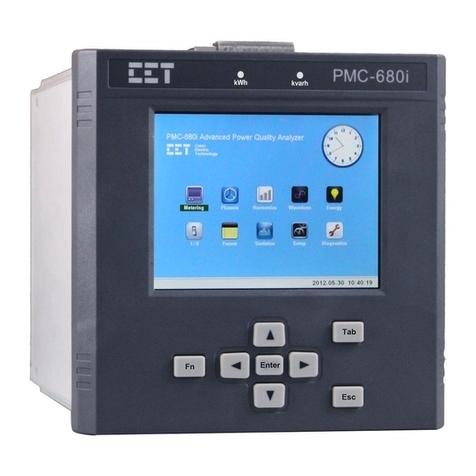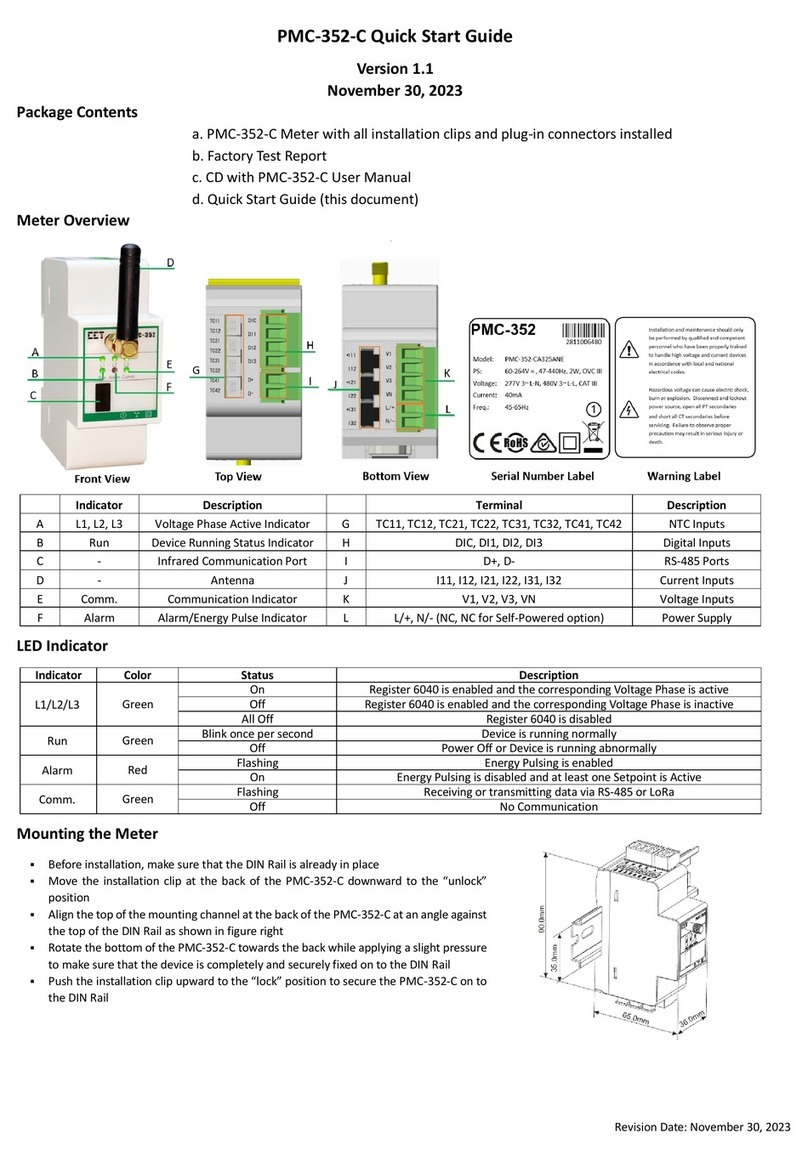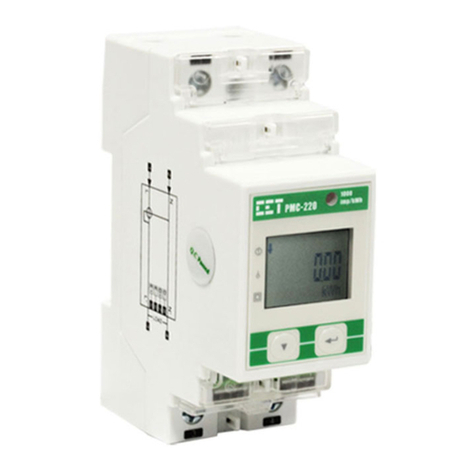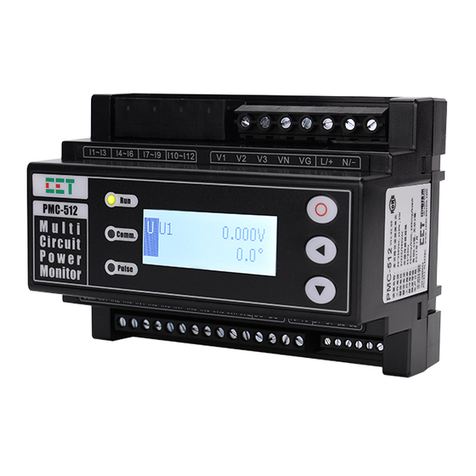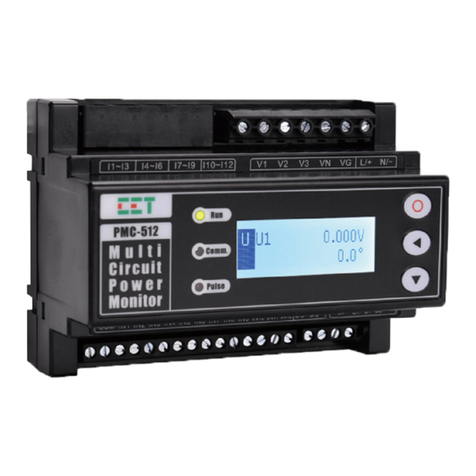
Ceiec Electric Technology
5
Table of Contents
Chapter 1 Introduction ............................................................................................................................7
1.1 Overview ....................................................................................................................................7
1.2 Features......................................................................................................................................7
1.3 PMC-53 series’ application in Power and Energy Management Systems...................................9
1.4 Getting more information ........................................................................................................10
Chapter 2 Installation ............................................................................................................................11
2.1 Appearance ..............................................................................................................................11
2.2 Unit Dimensions .......................................................................................................................12
2.3 Mounting..................................................................................................................................12
2.4 Wiring connections ..................................................................................................................13
2.4.1 3-phase 4-wire Wye Direct Connection ........................................................................13
2.4.2 3-phase 4-wire Wye with 3PTs and 3CTs.......................................................................14
2.4.3 3-phase 3-wire Open Delta Direct Connection .............................................................14
2.4.4 3-phase 3-wire Open Delta with 2PTs and 3CTs............................................................15
2.4.5 3-phase 3-wire Open Delta with 2PTs and 2CTs............................................................15
2.5 Communications Wiring...........................................................................................................16
2.6 Digital Input Wiring ..................................................................................................................16
2.7 Digital Output Wiring ...............................................................................................................16
2.8 Pulse Output Wiring.................................................................................................................17
2.9 I residual Input Wiring..............................................................................................................17
2.10 Temperature Input Wiring......................................................................................................17
2.11 Power Supply Wiring..............................................................................................................17
Chapter 3 Front Panel ............................................................................................................................18
3.1 LCD Display...............................................................................................................................18
3.1.1 LCD Testing....................................................................................................................18
3.1.2 LCD Display Areas..........................................................................................................18
3.1.3 Peak Demand Display....................................................................................................20
3.2 LED Indicators...........................................................................................................................20
3.3 Display Screen Types ................................................................................................................20
3.3.1 Default Screen...............................................................................................................21
3.3.2 Data Display ..................................................................................................................21
3.4 Setup Configuration via the Front Panel ..................................................................................22
3.4.1 Functions of buttons .....................................................................................................22
3.4.2 Reset the Alarm LED and Buzzer ...................................................................................23
3.4.3 Setup Menu ..................................................................................................................24
3.4.4 Configuration ................................................................................................................25
Chapter 4 Applications ..........................................................................................................................30
4.1 Inputs and Outputs...................................................................................................................30
4.1.1 Digital Inputs .................................................................................................................30
4.1.2 Digital Outputs ..............................................................................................................30
4.1.3 Energy Pulse Outputs....................................................................................................31
4.1.4 I residual Input ..............................................................................................................31












